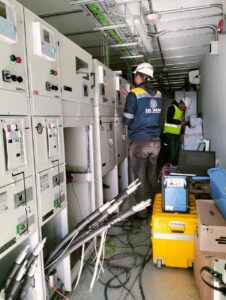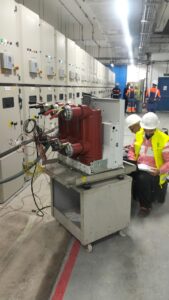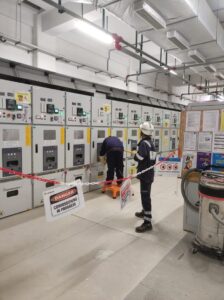Introduction
As the global energy landscape evolves, wind energy stands out as a crucial pillar in the transition to sustainable power generation. The advancements in wind energy technologies and the implementation of large-scale projects worldwide have revolutionized the sector. This article delves into the sophisticated innovations, technological advancements, and broader impacts of wind energy projects, highlighting how these efforts contribute to a sustainable future.
Cutting-Edge Wind Turbine Technology
The foundation of any successful wind energy project lies in the efficiency and reliability of wind turbines. The latest turbine technology maximizes energy capture and minimizes downtime. Key innovations include:
- Advanced Aerodynamics: Modern turbines feature blades designed with advanced aerodynamics, reducing drag and increasing lift. This results in higher efficiency, even at lower wind speeds.
- Direct Drive Systems: Unlike traditional turbines that use gearboxes, direct drive systems eliminate mechanical losses, enhance reliability, and reduce maintenance costs. These systems also allow for larger, more powerful turbines.
- Smart Sensors and IoT Integration: Equipped with smart sensors and Internet of Things (IoT) connectivity, turbines continuously monitor performance, weather conditions, and structural health. This data-driven approach enables predictive maintenance, reducing unexpected failures and optimizing energy output.
Site Selection and Optimization
Choosing the optimal location for wind farms is crucial for maximizing energy production. Advanced Geographic Information System (GIS) tools and wind resource assessment technologies identify the best sites. Factors considered include:
- Wind Resource Mapping: High-resolution wind maps and long-term meteorological data help pinpoint areas with consistent and strong wind patterns.
- Environmental and Social Impact Assessments: Comprehensive studies ensure that wind farms are sited in locations that minimize environmental impact and have the support of local communities.
- Land Use Optimization: By using innovative layout designs and micro-siting techniques, turbines are placed to maximize energy capture while minimizing wake effects and land use conflicts.
Innovations in Energy Storage and Grid Integration
One of the challenges of wind energy is its intermittent nature. This is addressed with cutting-edge energy storage and grid integration solutions:
- Battery Storage Systems: Large-scale battery storage systems store excess energy generated during peak wind periods. This stored energy can be dispatched when wind speeds are low, ensuring a stable supply.
- Hydrogen Production: Surplus wind energy can be used to produce green hydrogen through electrolysis. This hydrogen can be stored and used as a clean energy source for various applications, including transportation and industrial processes.
- Advanced Grid Management: Smart grid technologies enable real-time balancing of supply and demand, integrating wind energy seamlessly with other renewable sources. These systems also enhance grid stability and prevent overloads.
Economic and Environmental Impact
The benefits of wind energy projects extend beyond energy production. Key impacts include:
- Job Creation and Economic Growth: Wind energy projects create numerous jobs in manufacturing, construction, and maintenance. Additionally, they stimulate local economies through infrastructure development and community investment.
- Carbon Emission Reduction: By replacing fossil fuel-based power generation, wind energy significantly reduces greenhouse gas emissions, contributing to global climate goals.
- Energy Independence: Wind energy enhances energy security by reducing reliance on imported fossil fuels, providing a stable and domestically sourced energy supply.
Community Engagement and Sustainability
Community engagement and sustainability are integral to successful wind energy projects. Initiatives include:
- Community Benefit Programs: These programs ensure that local communities share in the economic benefits of wind energy projects through investments in local infrastructure, education, and healthcare.
- Environmental Stewardship: Measures are implemented to protect local wildlife and ecosystems, such as bird and bat monitoring programs and habitat restoration projects.
- Educational Outreach: Collaborating with schools and universities, the sector promotes education and awareness about renewable energy and sustainability, inspiring the next generation of engineers and environmentalists.
Conclusion
Wind energy projects exemplify the advanced technologies, innovative approaches, and commitment to sustainability that are essential for addressing global energy challenges. By harnessing the power of wind, the sector is not only contributing to a greener future but also driving economic growth and community development. As wind energy projects continue to innovate and expand, they remain at the forefront of the renewable energy revolution, setting new standards for excellence and sustainability in the industry.





